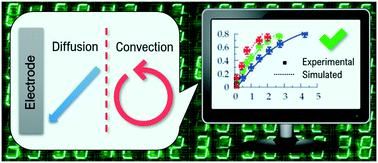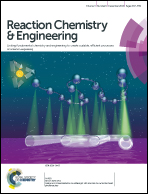Two-compartment kinetic Monte Carlo modelling of electrochemically mediated ATRP†
Abstract
For electrochemically mediated atom transfer radical polymerization (eATRP), novel mechanistic insights are formulated based on a two-compartment kinetic Monte Carlo model in which catalyst concentration gradients between a large “bulk” compartment away from the electrode and a very small compartment around the electrode are accounted for to reflect the concept of the Nernst diffusion layer. The mass transport of deactivator catalyst to the electrode and its electrochemical reduction at the electrode are treated separately to enable the model to explicitly distinguish between limitations of mass transport and limitations due to intrinsic chemical reactivity. The model is applied to eATRP of methyl acrylate at 298 K with CuIIBr2/Me6TREN (Me6TREN: tris((2-dimethylamino)ethyl)amine) and eATRP of n-butyl acrylate at 317 K with CuIIBr2/TPMA (TPMA: tris(2-pyridylmethyl)amine). Diffusional limitations on termination need to be accounted for to properly reflect the eATRP kinetics and the microstructural properties of the obtained polymers. In most cases, an eATRP with mixed chemical and mass transport control is obtained.



 Please wait while we load your content...
Please wait while we load your content...